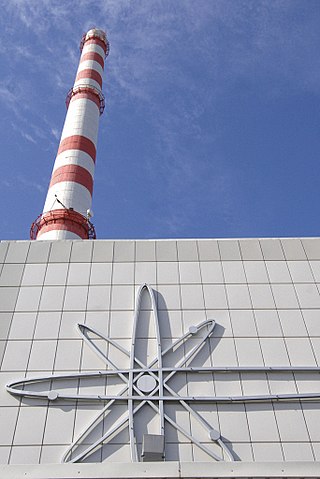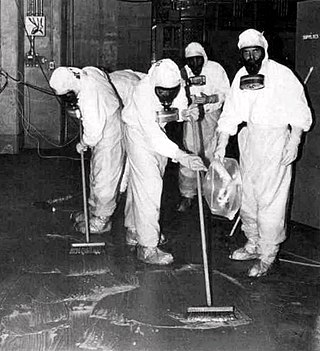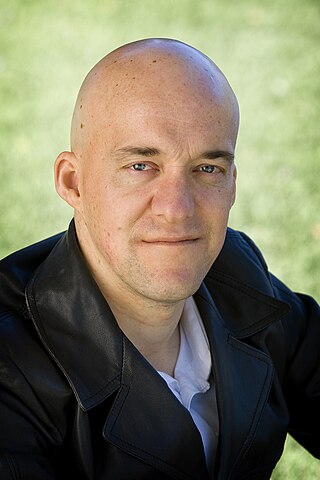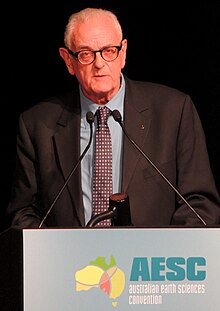
Nuclear energy policy is a national and international policy concerning some or all aspects of nuclear energy and the nuclear fuel cycle, such as uranium mining, ore concentration, conversion, enrichment for nuclear fuel, generating electricity by nuclear power, storing and reprocessing spent nuclear fuel, and disposal of radioactive waste. Nuclear energy policies often include the regulation of energy use and standards relating to the nuclear fuel cycle. Other measures include efficiency standards, safety regulations, emission standards, fiscal policies, and legislation on energy trading, transport of nuclear waste and contaminated materials, and their storage. Governments might subsidize nuclear energy and arrange international treaties and trade agreements about the import and export of nuclear technology, electricity, nuclear waste, and uranium.

Russia is one of the world's largest producers of nuclear energy. In 2020 total electricity generated in nuclear power plants in Russia was 215.746 TWh, 20.28% of all power generation. The installed gross capacity of Russian nuclear reactors is 29.4 GW in December 2020.
Nuclear power in the United Kingdom generated 16.1% of the country's electricity in 2020. As of August 2022, the UK has 9 operational nuclear reactors at five locations, producing 5.9 GWe. It also has nuclear reprocessing plants at Sellafield and the Tails Management Facility (TMF) operated by Urenco in Capenhurst.

Nuclear safety is defined by the International Atomic Energy Agency (IAEA) as "The achievement of proper operating conditions, prevention of accidents or mitigation of accident consequences, resulting in protection of workers, the public and the environment from undue radiation hazards". The IAEA defines nuclear security as "The prevention and detection of and response to, theft, sabotage, unauthorized access, illegal transfer or other malicious acts involving nuclear materials, other radioactive substances or their associated facilities".

The China National Nuclear Corporation is a state-owned enterprise founded in 1955 in Beijing. CNNC's president and vice-president are appointed by the Premier of the People's Republic of China. CNNC oversees all aspects of China's civilian and military nuclear programs. According to its own mission statement, it "is a main part of the national nuclear technology industry and a leading element of national strategic nuclear forces and nuclear energy development."

China is one of the world's largest producers of nuclear power. The country ranks third in the world both in total nuclear power capacity installed and electricity generated, accounting for around one tenth of global nuclear power generated. As of February 2023, China has 55 plants with 57GW in operation, 22 under construction with 24 GW and more than 70 planned with 88GW. About 5% of electricity in the country is due to nuclear energy. These plants generated 417 TWh of electricity in 2022 This is versus the September 2022 numbers of 53 nuclear reactors, with a total capacity of 55.6 gigawatt (GW). In 2019, nuclear power had contributed 4.9% of the total Chinese electricity production, with 348.1 TWh.

Nuclear power in Australia has been a topic of debate since the 1930s. Australia has one nuclear reactor (OPAL) at Lucas Heights, New South Wales, which is only used to produce radionuclides for nuclear medicine, and does not produce electricity. Australia hosts 33% of the world's proven uranium deposits, and is currently the world's third largest producer of uranium after Kazakhstan and Canada.

Since about 2001 the term nuclear renaissance has been used to refer to a possible nuclear power industry revival, driven by rising fossil fuel prices and new concerns about meeting greenhouse gas emission limits.

Barry William Brook is an Australian scientist. He is an ARC Australian Laureate Professor and Chair of Environmental Sustainability at the University of Tasmania in the Faculty of Science, Engineering & Technology. He was formerly an ARC Future Fellow in the School of Earth and Environmental Sciences at the University of Adelaide, Australia, where he held the Sir Hubert Wilkins Chair of Climate Change from 2007 to 2014. He was also Director of Climate Science at the Environment Institute.
The Australian Radiation Protection and Nuclear Safety Agency (ARPANSA) is a regulatory agency under the Commonwealth of Australia that aims to protect Australian citizens from both ionising and non-ionising radiation. ARPANSA works under the guidance of the Australian Radiation Protection and Nuclear Safety Act of 1998 as the national regulatory body of radiation in Australia, with independent departments within each state and territory that regulate radiation within each of their jurisdictions.

NuScale Power Corporation is a publicly traded American company that designs and markets small modular reactors (SMRs). It is headquartered in Tigard, Oregon. A 50 MWe version of the design was certified by the US Nuclear Regulatory Commission (NRC) in January 2023. The current scalable 77 MWe SMR VOYGR design was submitted for NRC review on January 1, 2023, and as of December 2023 was about a third complete.

The small modular reactor (SMR) is a class of small nuclear fission reactor, designed to be built in a factory, shipped to operational sites for installation and then used to power buildings or other commercial operations. The term SMR refers to the size, capacity and modular construction. Reactor type and the nuclear processes may vary. Of the many SMR designs, the pressurized water reactor (PWR) is the most common. However, recently proposed SMR designs include: generation IV, thermal-neutron reactors, fast-neutron reactors, molten salt, and gas-cooled reactor models.
GE Hitachi Nuclear Energy (GEH) is a provider of advanced reactors and nuclear services. It is headquartered in Wilmington, North Carolina, United States. Established in June 2007, GEH is a nuclear alliance created by General Electric and Hitachi. In Japan, the alliance is Hitachi-GE Nuclear Energy. In November 2015, Jay Wileman was appointed CEO.

Holtec International is a supplier of equipment and systems for the energy industry. Founded in Mount Laurel, New Jersey in 1986, Holtec International is a privately-held technology company with domestic operation centers in New Jersey, Florida, Ohio and Pennsylvania and worldwide in Brazil, India Japan, Mexico, Poland, South Africa, Spain, U.K. and Ukraine. It specializes in the design and manufacture of parts for nuclear reactors. The company sells equipment to manage spent nuclear fuel from nuclear reactors.
Moorside nuclear power station is proposed for a site near Sellafield, in Cumbria, England. The original plan by NuGeneration, a British subsidiary of Toshiba-owned Westinghouse Electric Company, had the station coming online from 2024 with 3.4 GW of new nuclear capacity, from three AP1000 reactors. Work up to 2018 would include acquiring the site licence, the development consent order, and other required permits and permissions to start work. Site preparation was to take two years, up to 2020.
Stephen Lincoln is a chemistry and physics professor at the University of Adelaide's Environment Institute. His work in molecular science has resulted in over 300 publications in scientific journals and he is the author of Challenged Earth: An Overview of Humanity’s Stewardship of Earth (2006), a book in which he discusses population, water, food, biotechnology, health, energy, climate change and the ozone layer. He has a long-term interest in nuclear power and is a board member and spokesperson for South Australian Nuclear Energy Systems, a private Australian company established in 2014 to explore the feasibility of nuclear industrial development projects in South Australia. Lincoln has been a media spokesperson on nuclear issues in the wake of the Fukushima nuclear disaster and in the lead up to South Australia's Nuclear Fuel Cycle Royal Commission in 2015. His work has been awarded by the Royal Australian Chemical Institute and UNESCO.
Benjamin "Ben" Heard is a South Australian environmental consultant and an advocate for nuclear power in Australia, through his directorship of environmental NGO, Bright New World.

The stable salt reactor (SSR) is a nuclear reactor design under development by Moltex Energy Canada Inc. and its subsidiary Moltex Energy USA LLC, based in Canada, the United States, and the United Kingdom, as well as MoltexFLEX Ltd., based in the United Kingdom.
Dr Ian Duncan is a businessman active in the Australian resources sector. He is a past president of operations at the Olympic Dam mine in South Australia under Western Mining Corporation. He was Chairman of the London-based Uranium Institute in 1995-1996. From the 1990s to the present, Duncan has advocated for nuclear industrial development in Australia, specifically the development of facilities to store and dispose of nuclear waste and the legalization and development of nuclear power plants for the generation of electricity. He is a Fellow of the Australian Academy of Technology, Science and Engineering (ATSE), the Australasian Institute of Mining and Metallurgy (AusIMM), and Engineers Australia.












